Important alternative fuel trials update for steamers
Posted by Chris Graham on 27th April 2023
The National Traction Engine Trust’s Tom Attwood brings us the latest news on the important alternative fuel trials.
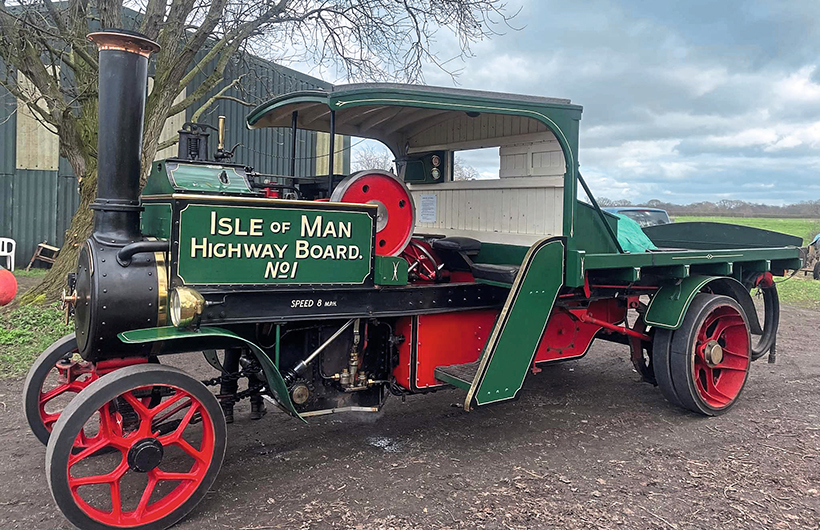
The writer’s own newly-purchased 1920 Foden 5-ton wagon No.10320 was one of the guinea pigs during the February trials.
Over the course of the past 12 months, the National Traction Engine Trust has been carrying out trials and gathering feedback from members and non-members alike about their experiences of using various coals and manufactured fuels in road steam applications. This has been a planned activity to seek alternatives against the prospect of the eventual closure of the coal mine at Ffos-y-fran, which has supplied the heritage steam sector with readily affordable and available coal since 2007.
However, these trials were somewhat thrown into the limelight by the temporary pause in Ffos-y-fran coal supply to the heritage sector in early 2022, and the subsequent disturbances to supply that have been experienced since then. This situation coincided with the most obvious alternative supplies of coal from Russia becoming embargoed, along with other sources also disappearing, or their trade routes becoming prohibitive. The European energy security situation saw the traded commodity price of coal double, and remain elevated as a result. The outlook in early 2022 was sobering for many, and certainly remains an important and challenging topic for owners, operators and enthusiasts of road steam.
Happily, the Ffos-y-fran coal supply to the heritage sector resumed in May 2022, but has been beset with various issues since then, limiting the consistency of supply, although this appears to be settling at present. The NTET stands by to support the planning application to the operators’ licence as required, which could see mining continue for a further three years. Exploring other suitable sources of lump coal from around the world continues, as well.
One of the most significant and important relationships to be established as part of the NTET trials, alongside the Heritage Fuel Alliance, was that with CPL, a UK-based producer of manufactured fuels. CPL engaged fully and willingly to develop manufactured fuels that will work for the heritage sector. These activities have spanned the railways, stationary steam applications and, of course, road steam.
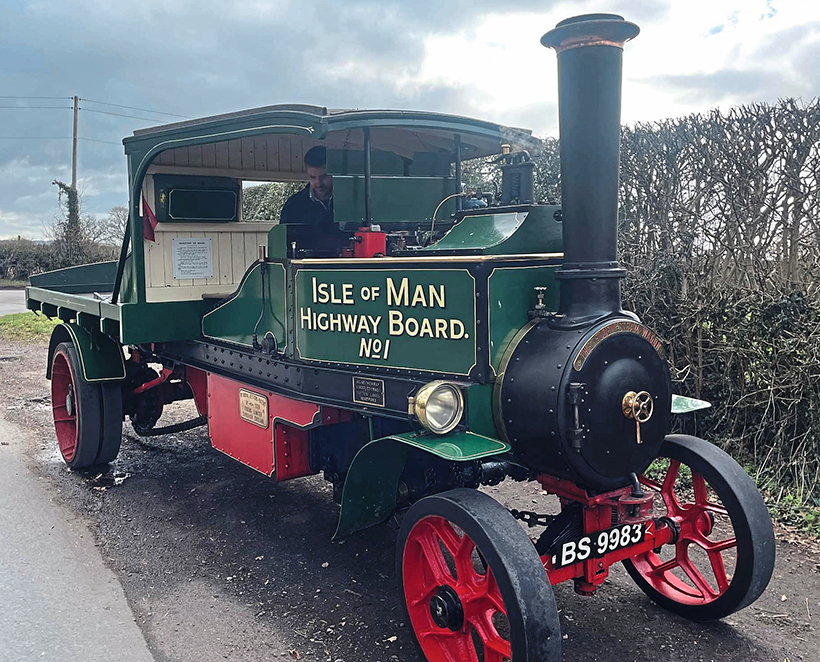
We must thank Tom and his team for their efforts in developing these products with CPL.
The feedback and scoring sheets completed by those willing to take part in the NTET trials were utilised to provide characteristic and performance data to CPL. The purpose of this was to allow them to tailor a fuel that would best suit the road steam application. Several iterations of various fuel ratios were trialled and refined. While there isn’t a perfect ‘one size fits all’ solution, and lump steam coal may be preferable to many, the development and performance of the manufactured product discussed in this article is quite impressive; a positive reflection of the work carried out and an important part of the movement’s longer-term options for viable fuel.
The fuel’s brand name is Wildfire and this iteration of the ongoing development work is now made available to all for the domestic market, but with a make-up and manufacturing method tailored for the heritage sector from feedback, and specifically that from the road steam data. This version differs from the original Wildfire that some readers may have tried last year. This version now supersedes that. It should also not be confused with Wildfire-Heritage which is different again and has generally proved more successful in rail applications than road steam.
Early trials of most ovoid products from various manufacturers saw issues with high ash content, significant fly-ash, slow ignition and, in some cases, clinker. There were also concerns raised over the chlorine content exceeding that of coal. The new Wildfire has addressed these with the following attributes. The ovoid is cold-cured and compacted to a greater extent than any other ovoid manufactured before by CPL, this makes for a dense ovoid (not as dense as coal – but that’s a tall order). It’s bound with resin, which helps with the hardness but also reduces the chlorine content to trace levels and less than coal. The clever use of a new method of processing a biomass by-product now gives reactivity and ease of ignition, producing long yellow flames readily when added to a fire. The remainder of the ovoid utilises bituminous coal and anthracite, to give the burning qualities of high and sustained heat. The ash content is vastly reduced, to similar levels as coal.
The overall burning gives clean emissions, Defra- and HETAS-approved for domestic burning, meaning that there’s some visible smoke (on a par with, say, Ffos-y-fran, when firing), but for the majority of the time it’s clear to a slight haze.
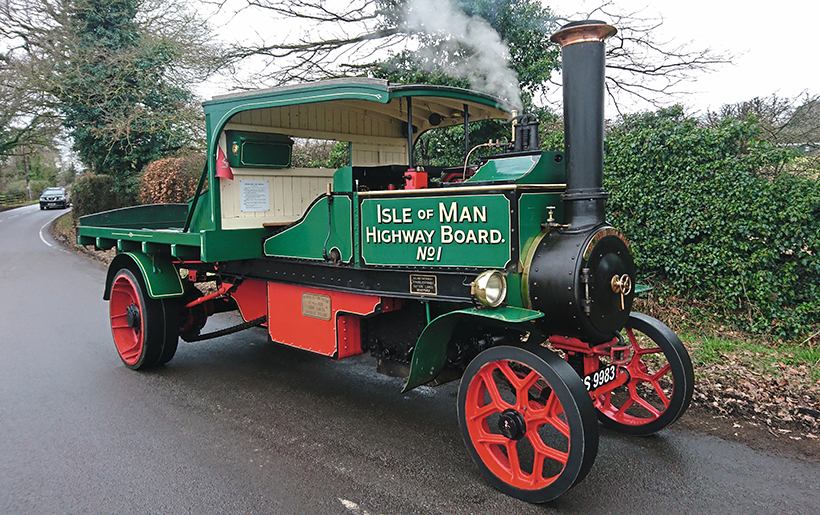
Engineer Tom Attwood made good progress with No. 10320, which made good steam with the latest Wildfire fuel.
Other positives include the fact that the fuel is extensively quality-controlled, so the natural variation seen with coal (or any mined product) is significantly reduced; the ovoids with their high crush strength resist breaking down or fracturing; they can be stored outside without disintegrating and the price point is on a par with that of coal. In addition, the chemical analysis data of the fuel make-up doesn’t pose any obvious concerns compared to various coals, although this is a matter that will need monitoring over time.
Like any fuel and any change, the new fuel requires some learning and adaption to ensure the best results. This is something that individual operators will need to experiment with, in terms of firing technique and potentially firebar design/spacing, blast and draught, etc.
The new Wildfire version was tried first in any heritage application on a 10-mile run with 1920 Foden 5-ton steam wagon No. 10320, back in early February. The test trip was on an undulating route and with single-man operation throughout.
The steaming characteristics were excellent, equivalent to that of a good coal and fully controllable on the airtight damper. Reactivity when the fuel was added was very good, with fly-ash, ash in the ashpan and smokebox being equivalent to a good coal. The fire recovered easily from a lunch stop simply by adding more fuel, opening the damper, allowing it to catch and heading out on to the road. There was no clinker whatsoever. Consumption was later calculated against that of Ffos-y-fran and 28% more fuel was used. However, this was the first ever use and it was felt this could be improved upon.
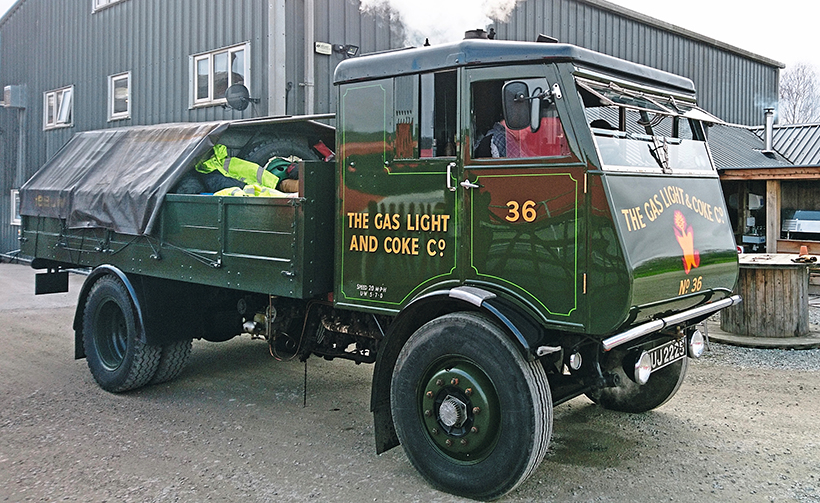
The September 1933 Sentinel S4 No. 8827, that was new to The Gas Light & Coke Company, performed well with the product after getting used to it.
A second trial was undertaken on February 25th, doubling the route length to 20 miles and including hills, both steady constant climbs, short sharp banks and one significant hill. This trip is representative of a normal road trip and a crew of two was used. Again, the fuel performed extremely well. Consumption improved to 20% more than Ffos-y-fran, and exceeded that of other bituminous coals, positively indicating that learning and adapting to the fuel saw improvement in efficient use. This trip involved a much longer half-way pause totalling thee hours idling where the wagon sat for an hour and then was used on short pleasure rides up and down the road with various friends having a go at driving and steering. On the return trip it was decided not to riddle the fire and so a fresh layer of fuel was added; a practice that, with some coals, can result in clinker.
The steaming performance was down from the very start and so a stop was made to clean the fire and equally run the fire depth down. Steadily the fire and thus pressure recovered. The wagon stormed the three-quarter-mile hill on the return stretch feathering at the safety valves, making steam and with the water pump on. There was no clinker whatsoever. The slow steaming was attributed to the ash-bed on the firebars restricting the air, particularly when fresh fuel was added, essentially deepening the fire more than on the successful outgoing run. The lesson here would be to treat it similarly to coal and clean the air gaps between the bars, freshen the fire before setting off. This is shared openly with all in the interests of anyone who wishes to try using Wildfire themselves, and as part of the collective learning process.
Others are also trialling this version of Wildfire and feedback is generally being shared on various social media platforms. Other successful road-steamings in recent weeks include a 1901 Burrell single-crank which completed a seven-mile round trip with quite an arduous hilly outbound route.
Karl Titchener, of Marston Steam Restoration, commented that he was very impressed with the new variation of the fuel: “It’s easy to use, raises and maintains steam with ease, is very reactive and responsive with great recovery. With similar consumption rates to coal, Wildfire overall is a great alternative to any lump coal.”
Further independent trials continue with various other users including road steaming, thrashers, saw benches, stone crushers as well as rail operators and other static boilers. The breadth of engine types and uses within road steam is extensive. It’s not possible to trial fuel in all these applications, so it’s necessary to try to get a fair cross-section or representative levels of demand on fire, pressure, temperature etc.

A lighter application was found best with the conventional boiler of the Foden.
One of the most demanding road steam uses in terms of fuel is within vertical boilers. This was highlighted in the development phase and, therefore, a Sentinel S4 was selected to also be an early user of this iteration of Wildfire, by kind agreement of its owners. Having completed a 17-mile test trip to familiarise the crew with the fuel and determine if it was viable to use, in late February a longer 40-mile run into parts of Wales and Shropshire on a very hilly route (including a section of dual-carriageway running), was undertaken.
The Sentinel ran on a mix of two different sizes of ovoid, which seemed to significantly help address the ‘drumming/humming’ noise experienced in the first trial, and typically associated with a ‘hole in the fire’. It was felt by the fireman that this allowed for a thinner fire to be run and that better steaming was achieved this way, using a ‘little and often’ method to keep pressure and temperature up.
A lunchtime stop allowed a good opportunity to see how the fire would sit, idle and recover. Nothing extraordinary compared to a coal fire was required. The return trip was a little sluggish in recovery requiring two ‘blow-ups’ but, after these, the performance was faultless and hill-climbing was impressive.
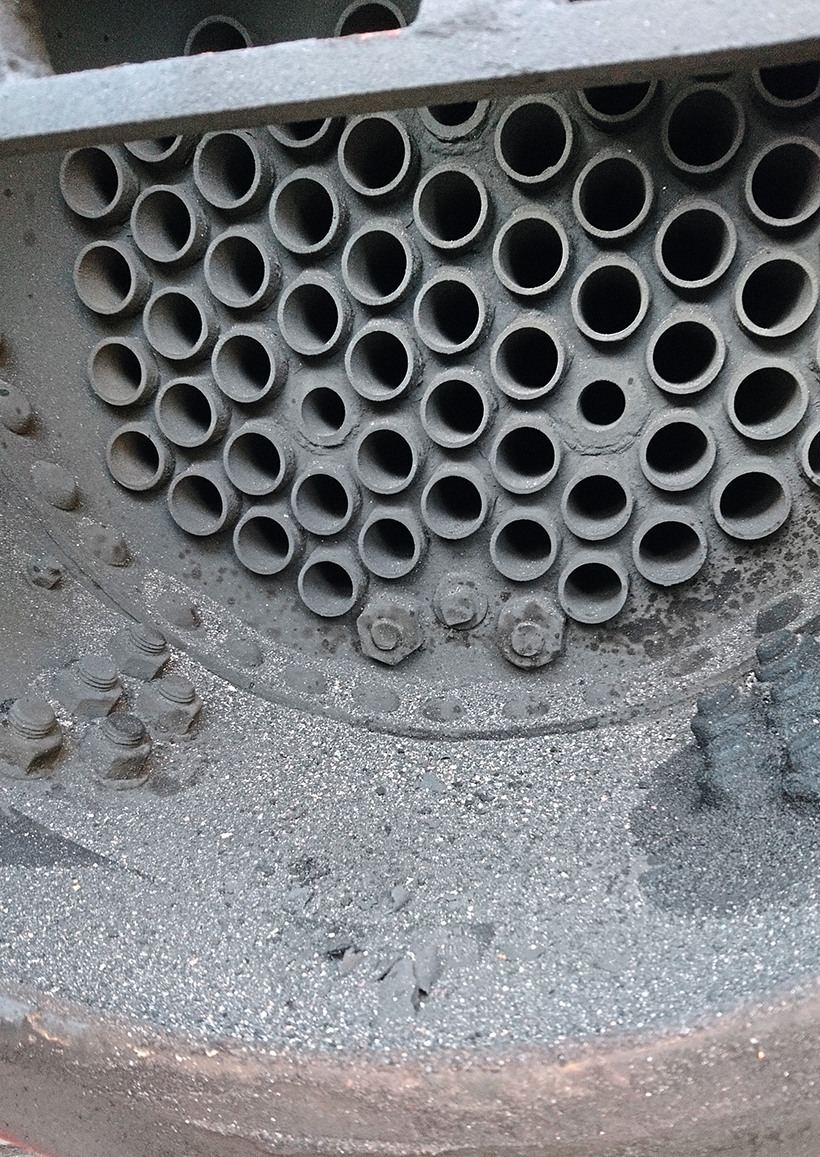
The light ash in the tubeplate after the cooling down process.
The following morning on ash-out, the ashpan had an expected amount of fine ash; the firebars had a light covering of clinker in parts. The remainder of the fire was ash and burnt ovoids. It was remarked that the fire on return to base was still larger than needed, and that the clinker formation was possibly formed during the cooling down phase, as the performance of the waggon on the return section didn’t suggest any such issues were present.
The purpose of this trial was to build confidence that the fuel would perform in a high-demand application over a sustained period of running. It’s felt consumption is greater than that of Ffos-y-fran, but to quantify that accurately involves repeating the route on Ffos – an activity that’s planned, together with a further trial using just the smaller-size ovoid alone.
This is a constantly developing situation and one which the NTET intends to remain at the forefront of. From the trials of manufactured fuels to date, and with the expert support of CPL and others, the immediate future is looking much more favourable.
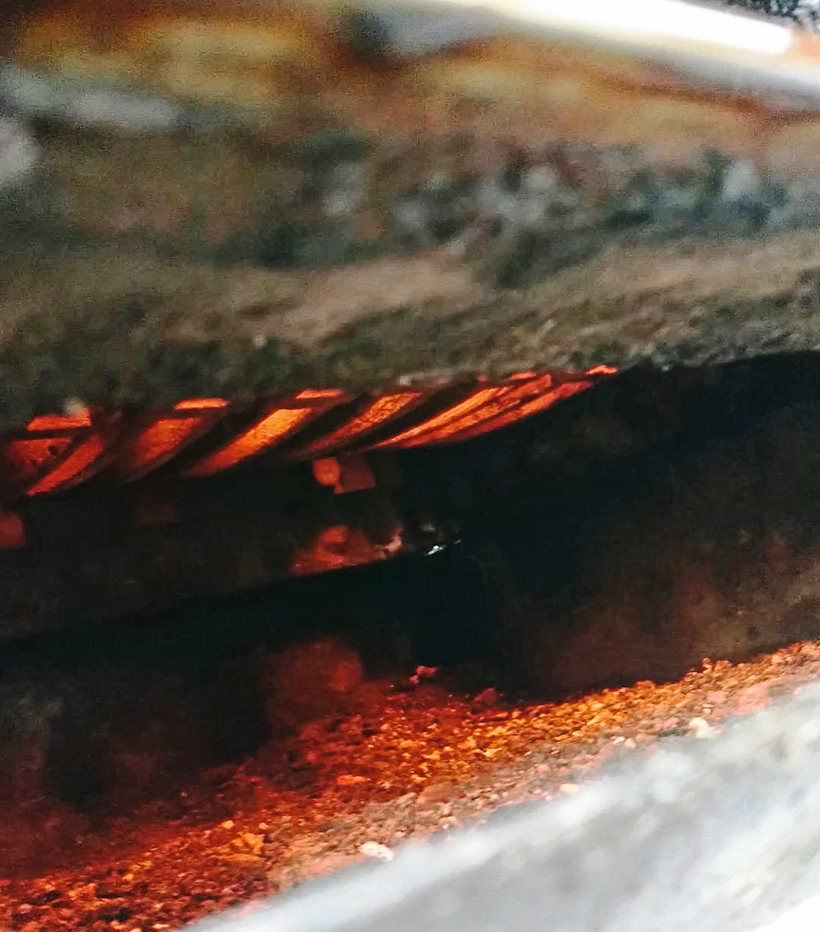
The ashpan content in the Foden later during the extended test.
CPL comments
CPL has been working closely with the heritage steam sector over the past couple of years and have been committed to finding a smokeless manufactured fuel alternative to natural lump coal, suitable for the whole market. After various blend combinations, trials and constant collaboration with NTET, we’re pleased to have achieved just this in our Wildfire product. While providing a performance level equal to a good quality lump or steam coal, Wildfire is quickly becoming recognised as a viable economical alternative to historically-used coals.
There has been a very positive demand for the Wildfire product in the past couple of months, with many operators and steam fairs now considering Wildfire as the fuel of choice for this year’s summer shows. Wildfire is readily available nationwide with various supply options to suit all requirements. While CPL, working with the heritage steam sector, has developed products capable of meeting NTET and HRA needs, we continue to research and develop fuels to offer even better performance and benefits going forward. More importantly, our commitment is to provide the various steam sectors the assurance of a viable fuel source for years to come.
This feature comes from the latest issue of Old Glory, and you can get a money-saving subscription to this magazine simply by clicking HERE





